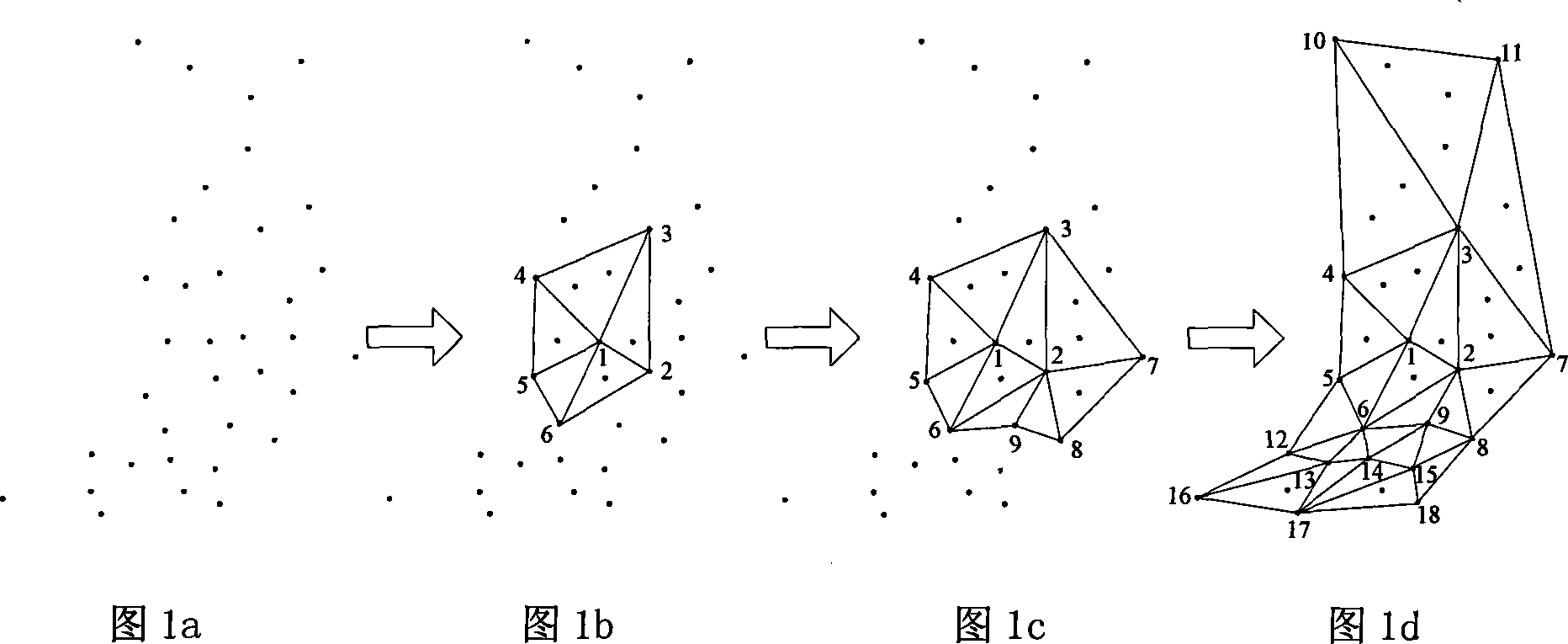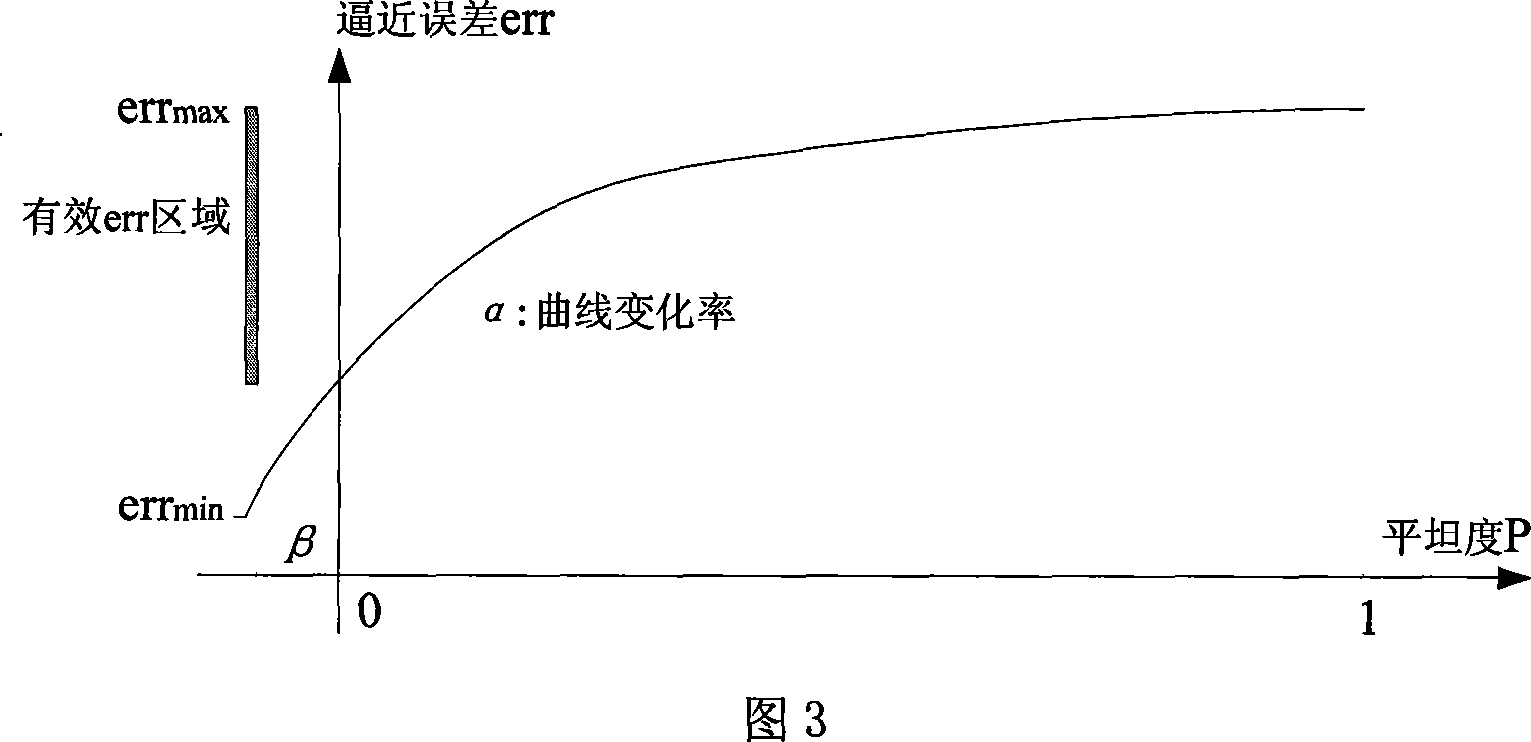System and method for converting disordered point cloud to triangular net based on adaptive flatness
A triangular mesh and flatness technology, applied in the direction of filling the plane with attributes, can solve problems such as difficulty in ensuring the quality of the mesh, difficulty in finding the projection plane, and difficulty in processing, so as to avoid deformation and jaggedness, reduce conversion time, and improve The effect of conversion speed
- Summary
- Abstract
- Description
- Claims
- Application Information
AI Technical Summary
Problems solved by technology
Method used
Image
Examples
example 1
[0050] The data of each point of the disordered point cloud is shown in Figure 5a. After the conversion of the present invention, the corresponding triangular grid is obtained, as shown in Figure 5b. The time consumption required for a total of 3189 points is 6 seconds, and the final drawing effect is shown in the figure 5c shown.
example 2
[0052] The data of each point of the disordered point cloud is shown in Figure 6a, Figure 6b is the local reconstruction result of the triangulation network (in order to show the reconstructed triangle patch more clearly, the effect of locally enlarged mesh is given here), and Figure 6c is the final drawing result. There are 51,920 point cloud data in total, and 42,876 triangle faces are generated, which takes 117 seconds. This example can also illustrate that the present invention can handle inner and outer boundaries better.
[0053] To sum up, the present invention avoids the high complexity calculation brought by tetrahedron subdivision. The time complexity of the tetrahedronization algorithm for general space scattered point set is 0(n2). However, the present invention preprocesses the point cloud and adopts the method of direct triangulation of space, thus ensuring that the overall time consumption of the algorithm is close to 0(n) when the number of points is large. ...
PUM
 Login to View More
Login to View More Abstract
Description
Claims
Application Information
 Login to View More
Login to View More - R&D
- Intellectual Property
- Life Sciences
- Materials
- Tech Scout
- Unparalleled Data Quality
- Higher Quality Content
- 60% Fewer Hallucinations
Browse by: Latest US Patents, China's latest patents, Technical Efficacy Thesaurus, Application Domain, Technology Topic, Popular Technical Reports.
© 2025 PatSnap. All rights reserved.Legal|Privacy policy|Modern Slavery Act Transparency Statement|Sitemap|About US| Contact US: help@patsnap.com



